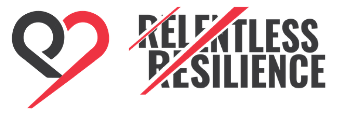HUMAN TRAFFICKING PREVENTION
Human Trafficking is a human rights abuse
that thrives in situations of inequity.
In societies across the globe, women and girls face inequality, discrimination, violence and control. Human trafficking in the sex trade is one of the most extreme forms of gender-based violence and disproportionately affects women and girls.
Marginalized and racialized women and girls experience added layers of discrimination and barriers to support, as well as youth in care and youth with mental health issues. Colonialism and systemic racism have created intergenerationally marginalized communities that are targeted by exploiters. Indigenous, Black, and other racialized women and girls often lack social supports, leaving room for exploitation under the guise of love, community and a better life.
Aura Freedom’s counter-trafficking work stresses the importance of prevention though education, advocacy and empowerment. We do not engage in ‘rescue industry’ activities. Our work aims to prevent human trafficking by advancing equity and addressing root causes.
Our online Human Trafficking Info Hub was launched in late 2021 and is a culmination of over a decade of Aura Freedom’s grassroots human trafficking prevention work with survivors, communities, and colleagues around the world. The Info Hub has quickly become a “go to” resource for service providers, students, parents, educators, advocates, researchers, communities and other anti-trafficking stakeholders.
Recently, Canadians have learned that human trafficking is not just an international issue, yet it is still a confusing topic for most. Our Human Trafficking Info Hub works to answer questions like; How does it happen? How do I know if someone I know is being groomed? Who is being affected? And more importantly, Why does it happen and what needs to be done to end it?
The Peer Prevention Project
The Gender Factor
As an extreme form of violence against women and girls, a strong, intersectional gender lens must be used when addressing sexual exploitation. Ultimately, the existence of sexual exploitation is due to the long-standing societal norm of gender inequality, which has given rise to the hyper-sexualization, dehumanization, and commodification of girls and women.
Traffickers prey on the growing insecurities of adolescent girls, which are fed by the deeply sexist nature of the media and entertainment industry, resulting in extreme physical and psychological trauma. The unrealistic expectations of women and girls in both the media and real life cannot be denied. This is in addition to the increasing need for popularity on social media. Moreover, young men are living in their own gender boxes and many feel pressure to prove their manhood in violent ways, leading to toxic masculinity and rape culture. When mixed with poverty and the inability to recognize unhealthy relationships and what true consent means, girls are left vulnerable and boys are unable to express their need for help or support.
Youth who identify as transgender or gender non-binary face even more discrimination and often lack social supports, leaving them vulnerable to violence, homelessness, addiction, and human trafficking.
Social media is increasingly used to target, recruit and groom young women and girls and ultimately exploit them. Indeed, many of the youth Aura Freedom has supported who were exploited in the sex trade were targeted and groomed online. Traffickers exploit vulnerabilities created by sexism, racism, poverty, gender inequality and toxic norms, lack of education, social supports, employment opportunities – and loneliness. Social media is a tool for traffickers looking to exploit these vulnerabilities in young women and girls through grooming practices, such as befriending them and giving them attention, stability, and gifts that young women and girls are usually unable to access in their day-today lives. They get a glimpse of a “dream life” before the rug is ripped out and the exploitation begins.
Indigenous Women and Girls
Although anyone can be trafficked, marginalized groups are the most targeted. Indigenous youth are the most at risk. Indigenous women make up only 4% of Canada’s population, yet nearly 50% of human trafficking survivors (Roudometkina and Wakeford, MWAC, 2018).
The ongoing colonial sexualization and dehumanization of Indigenous women’s bodies where Western ideology positions Indigenous women as inherently “violable and less valuable” than non-Indigenous women (Roudometkina and Wakeford, NWAC, 2018: 3) is but one small factor that has led to the higher risk Indigenous women and girls experience regarding human trafficking and sexual exploitation.
Testimony from the National Inquiry into MMIWG (2019) has highlighted the fact that human trafficking is strongly linked to the disproportionately high rates of violence against Indigenous women and girls. The extent of human trafficking and victimization of Indigenous women is grossly under-reported (Public Safety Canada, 2019).
The National Inquiry into MMIWG heard several stories about women and girls in the sex industry who experienced sexual exploitation, violence, and human trafficking – many spoke about daughters, mothers, and sisters who were murdered as a result of trafficking (MMIWG, 2019). When genocide, intergenerational trauma, racism, sexism, poverty, insecure housing, and overrepresentation in the criminal justice and child welfare systems are combined with a lack of comprehensive culturally sensitive social supports and barriers to accessing education, employment, health care, and cultural healing avenues, one cannot be surprised that the trafficking of Indigenous women and girls is happening at such a crisis-level rate in Canada.


